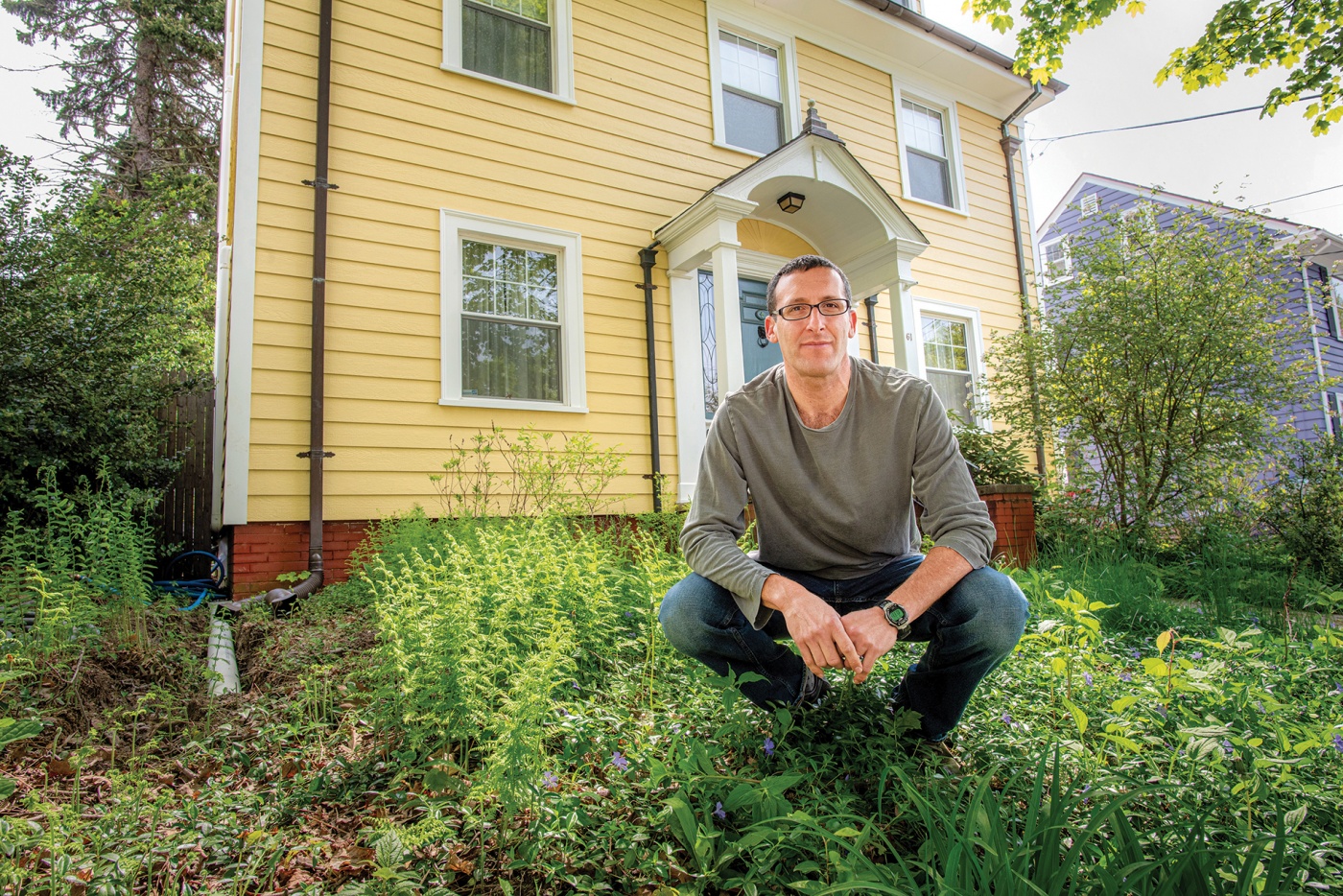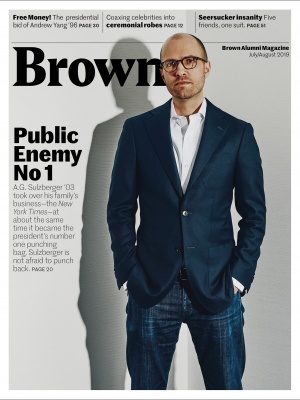Greener House
Associate Professor of Ecology and Evolutionary Biology and Assistant Provost for Sustainability Stephen Porder

I teach and give public lectures about climate change and I firmly believe I have to walk the walk as well as talk the talk. We all do, if we’re going to fix the problem. Something like ten to fifteen percent of my [carbon] emissions come from my house. The challenge is, how do you retrofit an old house and not break the bank?
My house was built in 1920 and had an oil burning furnace and leaked like a sieve. With steam radiators we had freezing spots next to roasting spots, and the air was super dry. We knew we had some insulation in the walls, but how much, and where? We started with a
thermal scan. That let us find and fill the holes. We added insulation under the siding and then demoed the attic space so we could add 11 inches of spray foam to the underside of the roof. The goal wasn’t to make it perfect, that’s way too expensive in a renovation—though it’s not in a new building. Instead, we wanted to make it not so leaky, so we could run off what are called heat pumps. These are super efficient air conditioners. In the summer they can take heat from inside and dump it outside, which cools us off. But more importantly, in the winter, they can extract heat from the cold air outside and bring it into the house to make it warm. The first winter we had them it was minus 18 degrees outside, and there was 140-degree air blowing out of that unit and I was like, “Wow, that’s pretty cool.”
We also purchase renewable energy. With just the change in efficiency, I have about a 50 percent reduction in emissions. And with more renewables coming on the grid, my house edges ever closer to zero emissions.
Brown is on the path to do to the campus what I did to my house. In February, the Corporation approved a net-zero-by-2040 goal, essentially eliminating fossil fuel combustion from campus and replacing it with renewables. Even if an individual or institution can’t fix climate change, doing something is a lot better than doing nothing.





